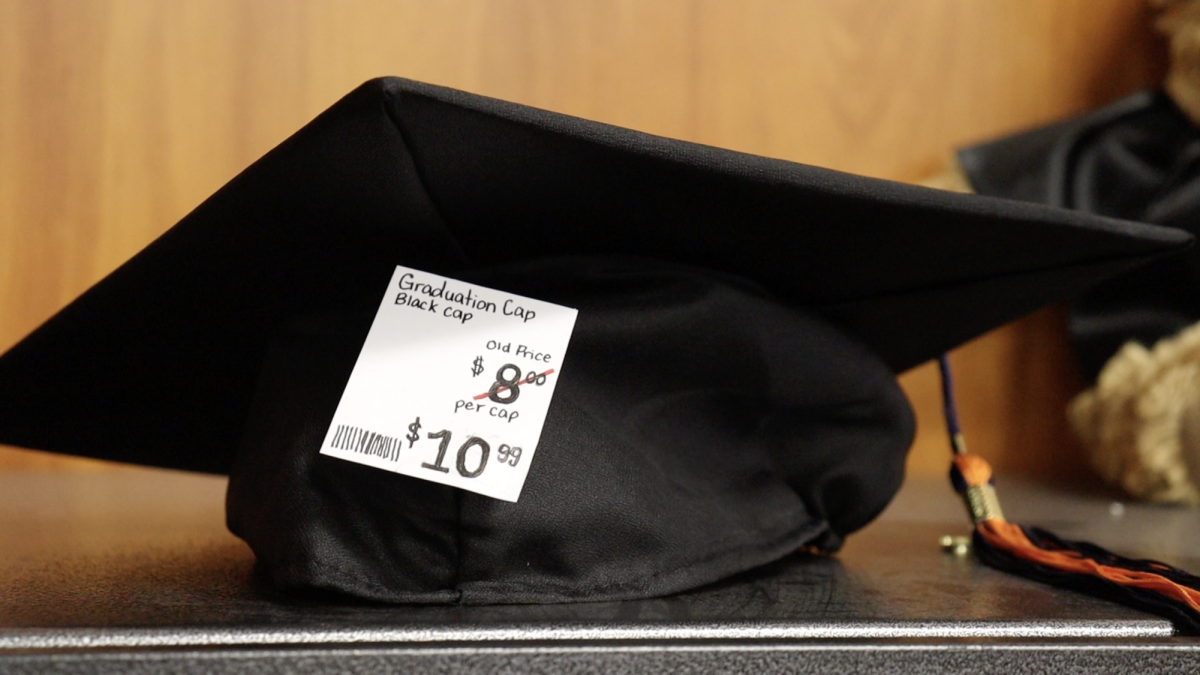After announcing global reciprocal tariffs on U.S. allies and adversaries, the Trump administration shortly lowered rates down on most of those tariffs to a universal 10% flat rate for 90 days. Notable exclusions are aluminum and steel, and items that don’t fall under the United States-Mexico-Canada Agreement (USMCA), remained taxed at 25%.
For Chinese imports, they are being met with rates as high as 145%. A tax hike coming after a year which saw $400 billion worth of imports from China, with most of the goods being electronics, machinery, furniture and toys.
The Trump Administration’s economic policies have caused CEOs of large companies, like Walmart and Target, who met with the president in a private meeting, to worry about the possibility of empty shelves, due to said companies cancelling shipments from China due to the tariffs. These companies have also expressed the need to raise prices on consumers.
Tom Fullerton Ph.D., a professor at the Department of Economics & Finance at The University of Texas at El Paso (UTEP), speaks about how tariffs will affect grocery prices.
“Tariffs will affect many food items that are imported during specific times of the year when the U.S. does not produce very much of those goods, like tomatoes and oranges from Sinaloa during the first and second quarters,” Fullerton said.
Recently, Trump announced that Chinese tariffs will “come down substantially, but it won’t be zero.” While the waiting period begins for new tariff rates to go up, or down, upcoming graduates have found ways to get around volatile prices.
Sabrina Bustillos, graduating from UTEP this spring with her master’s degree, sees the spike in prices at grocery stores.
“Personally, I buy groceries at Costco, just because it’s easier to shop once a month and get stuff in bulk than it is [to shop]every week,” Bustillos said. “It’s interesting because seeing the price differences, it’s so dramatic.”
Differences in prices range from the type of product being sold. Fresh produce, food, aluminum and steel from Canada and Mexico that fall under the USMCA are tariff free, but products that don’t, are either taxed at 10% or 25%.
The 25% tariffs are taxed primarily on aluminum and steel outside of Canada and Mexico, and are affecting large products like automobiles, planes and construction.
“Higher steel, aluminum, copper, and lumber import tariffs will probably raise the cost of construction for new units. That will then raise the prices of existing units, as well as the monthly rents for apartments,” Fullerton said.
Aluminum and steel tariffs also affect small items, like soda cans or frying pans.
“You really have to spend more time intentionally shopping, which is something that I’m learning, because prices are dramatically different,” Bustillos said.
China responded to U.S. tariffs by implementing their own tax on U.S. goods, currently charging 125%, with China looking to exempt select American imports.
While the globe navigates through trade turmoil, graduating students can be strong financially by learning about key options available to them that avoid items with a high tax.
“Rather [than] purchasing new cars, new graduates should consider buying used fleet cars that are still under warranty. Those fleet cars can be bought from rental car companies like Hertz or National, or from car dealers that sell their demo models after a few months,” Fullerton said.
How economically stable the world in which graduates are walking into is a trait too tough to decipher as of now.
In their time at UTEP, students who have walked the stage at the Don Haskins Center have been used to facing adversity, and they now get set to carry that attitude into the next chapter of their lives.
Sebastian Perez-Navarro is the multimedia editor for the Prospector and can be reached at [email protected] or Instagram and X @sebastianpn8








